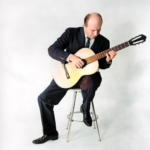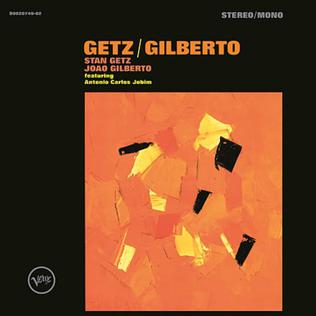From Havana To Rio: Tracing the Latin Jazz Phenomenon


When it comes to the jazz repertoire, we’ve talked about Standards that come from the world of musicals via Broadway and Hollywood, Jazz standards which were composed by jazz musicians strictly for performance and recording and then the Blues Standards that have become mainstays of the jazz idiom.
We are now going to take a look at yet another essential style that grafted itself into the jazz genre and created yet another set of “Standards” – Latin Jazz
Latin Jazz, more than just a musical genre, is a vibrant tapestry woven from diverse cultural threads. It’s a story of rhythm meeting melody, of traditions intertwining to create something transcendent. From the streets of Havana to the clubs of Rio de Janeiro, this genre has danced its way into the hearts of music lovers worldwide.
The journey of Latin Jazz is marked by iconic figures and pivotal moments. Dizzy Gillespie’s collaboration with Chano Pozo, bringing Afro-Cuban rhythms to the forefront, Stan Getz and Charlie Byrd introducing the sultry sounds of Bossa Nova to American ears, and Antonio Carlos Jobim, whose compositions like “The Girl from Ipanema” became global anthems, are but a few chapters in this rich narrative.




Latin jazz differs rhythmically from traditional jazz since it employs straight rhythm (or “even-eighths”), rather than traditional jazz “swing” 8th note feel.
Stylistically, Latin Jazz Falls into several Categories.
In a broad sense these fit into one of two main categories: Brazilian and Afro Cuban/Caribbean
Both of these main two styles break down further into sub styles.
Brazilian Jazz breaks down further into the Bossa Nova and Samba styles where Bossa Nova Jazz was more guitar based and Samba jazz was more piano trio based.
Meanwhile Afro Cuban was heavily percussion based and the piano was the strongest harmonic instrument and guitar doesn’t really play a big part at all.
Not only is the Afro Cuban style present in jazz via songs like A Night In Tunisia, Manteca or Cubana Be Cubana Bop but there is also a distinctive Caribbean calypso flavor present in jazz songs like Sonny Rollin’s very famous jazz standard St. Thomas.
With New Orleans as the birthplace of jazz the seeds of Latin Jazz were sown early.
The movement to include Latin rhythms into Jazz began in that city’s jazz era with the inclusion of habanera rhythm, or tango (also referred to as a “Spanish Tinge” by Jelly Roll Morton).
This made its way into early New Orleans jazz songs like St. Louis Blues and still appears all the way up into modern times as a more Argentinian tango in songs like Steve Kuhn’s Deep Tango.
The large bands of the swing era expanded their repertory to include rumbas, congas, cha cha, and other Latin “dance” feels into mainstream American popular music. These were linked to “Salsa” rhythms from African-Cuban dances such as the bolero, cha cha, guaguanco, guaracha, mambo, rumba and son montuno.
The first true Latin jazz piece was 1943’s “Tanga” composed by Mario Bauza and recorded by Machito.
Stan Kenton recorded “Machito,” in 1946 which is considered to be the first Latin jazz composition and recording by American jazz musicians.
And of course Manteca was composed and recorded by Dizzy Gillespie and co-written with Chano Pozo in 1947
The fusion of Latin Music with Jazz was now in full swing (pardon the pun) .
Then a decade later Brazil entered into the picture
Bossa Nova did not evolve or achieve popularity related to dance steps, but rather as a musical form.
Bossa Nova, which literally means “new wave,” was a blending of samba and jazz that rose out of a guitar school formed in Rio de Janeiro’s Copacabana neighborhood in 1956 and was a fusion of the melody and rhythm of samba and samba-cancao and the harmonic vocabulary of American standards and the feel of “cool” jazz.
Jazz Samba is a bossa nova album by Stan Getz and Charlie Byrd released by Verve Records in 1962 and signaled the beginning of the bossa nova craze in America.

Then Getz upped the ante with his collaboration with Brazilian guitarist João Gilberto on the album Getz/Gilberto which is considered to be THE record that popularized Bossa Nova worldwide and is one of the best-selling jazz albums of all time.
The album featured pianist and composer Antônio Carlos Jobim who also composed many of the tracks and established him as the leading Latin Jazz composer.

Jobim’s songs have been covered by a venerable “who’s who” of jazz musicians and even such popular music stars as Frank Sinatra.
From the 60’s and into the 70’s Bossa Nova even found its way into American-composed top 40 pop music as well (e.g., “I Say a Little Prayer,” “Walk on By,” “I’ll Never Fall in Love Again,” “Goin’ Out of My Head”). Even the Doors’ “Break On Through” uses the bossa drum and bass pattern.
Not only had Bossa Nova embedded itself into both jazz popular music, it was present in many feature films along the way (Black Orpheus, Un Homme et une Femme, Sandpiper etc.).
Latin jazz was ever present in mainstream pop music and had now become a required weapon in every traditional jazz musician’s arsenal.
In keeping with our thread of “Must Know Jazz Standards” from Musicals to jazz musicians’ compositions to Blues we now add these 50 Latin Jazz Standards to our list.
| A Felicidade | Jobim, Anotnio Carlos |
| Affirmation | Feliciano, Jose |
| Afro Blue | Santamaria, Mongo |
| Água de Beber | Jobim, Anotnio Carlos |
| Batucada (Batacada Surgin) | Valle, Marcos |
| Black Orpheus (Manhã de Carnaval) | Bonfa, Luiz |
| Blue Bossa | Dorham, Kenny |
| Captain Marvel | Corea, Chick |
| Caravan | Tizol, Juan |
| Carioca | Puente, Tito |
| Ceora | Morgan, Lee |
| Chega De Saudade (No More Blues) | Jobim, Anotnio Carlos |
| Coral Keys | Bishop Jr. Walter |
| Corcovado (Quiet Night of Quiet Stars) | Jobim, Anotnio Carlos |
| Desafinado (Slightly Out of Tune”, also “Off Key) | Jobim, Anotnio Carlos |
| Dindi | Jobim, Anotnio Carlos |
| Estate | Martino, Bruno |
| Five Hundred Miles High | Corea, Chick |
| Forest Flower | Lloyd, Charles |
| Gentle Rain | Bonfa, Luiz |
| Girl From Ipanema, The (A Garota de Ipanema) | Jobim, Anotnio Carlos |
| How Insensitive | Jobim, Anotnio Carlos |
| If You Never Come to Me (Inútil Paisagem) | Jobim, Antonio Carlos |
| Jazz ‘N’ Samba (Só Danço Samba) | Jobim, Anotnio Carlos |
| Jive Samba | Adderley, Cannonball |
| La Fiesta | Corea, Chick |
| Man and A Woman, A (Un Homme et une Femme) | Lai, Francis |
| Manteca | Gillespie, Dizzy |
| Meditation (Meditação) | Jobim, Anotnio Carlos |
| Night In Tunisia | Gillespie, Dizzy |
| O Barquinho (The Little Boat) | Menescal,Roberto |
| O Grande Amor | Jobim, Antonio Carlos |
| O Morrom Nao Tem Vez | Jobim, Antonio Carlos |
| O Pato | Gilberto, João |
| Once I Loved (Amor em Paz, also Love in Peace) | Jobim, Antonio Carlos |
| One Note Samba (Samba De Uma Nota So) | Jobim, Anotnio Carlos |
| Pensativa | Fischer, Clare |
| Recado Bossa Nova (The Gift) | Ferreira, Djalma |
| Recordame (No Me Esqueca) | Henderson, Joe |
| Samba de Orfeu | Bonfa, Luiz |
| Shadow Of Your Smile, The | Mandel, Johnny |
| Song For My Father | Silver, Horace |
| Spain | Corea, Chick |
| St. Thomas | Rollins. Sonny |
| Summer Samba (Samba de Verão, also So Nice) | Valle, Marcus |
| Triste | Jobim, Anotnio Carlos |
| Tristeza (Goodbye Sadness) | Lobo-Niltinho, Harold |
| Watch What Happens (Recit de Cassard) | Legrand, Michel |
| Waters of March (Águas de março) | Jobim, Antonio Carlos |
| Wave | Jobim, Anotnio Carlos |
Here are some of the Afro-Cuban/Caribbean Latin Jazz Artists you should know:
Arturo O’Farril
Arturo Sandoval
Cándido Camero
Carlos “Patato” Valdes
Chucho Valdés
Frank Machito
Israel “Cachao” Lopez
Juan Tizol
Manolo Badrena
Mario Bauzá
Paquito D’Rivera
Raul de Souza
Ray Barretto
Santamaria, Mongo
Tito Puente
Willie Bobo
Here are some of the Top Brazilian Jazz Musicians you should know:
Airto Moreira
Alyrio Lima
Antonio Carlos Jobim
Astrud Gilberto
Baden Powell
Bebel Gilberto
Bola Sete
Dom Um Romão
Egberto Gismonti
Eliane Elias
Elis Regina
Eumir Deodato
Flora Purim
Gato Barbieri
Gilberto Gil
Hermeto Pascoal
João Gilberto
Jorge Ben Jor
Laurindo Almaeda
Luiz Bonfá
Marcos Valle
Milton Nascimento
Moacir Santos
Naná Vasconcelos.
Oscar Castro-Neves
Paulinho Da Costa
Roberto Menescal
Sergio Mendes
Steve Barta
Tania Maria
Toninho Horta
Toquinho (Antônio Pecci Filho)
Victor Assis Brasil
Walter Wanderley
Other Latin Jazz Influencers (Not Brazilian or Caribbean)
Leandro “Gato” Barbieri – Arentina
“Rubén Blades” Bellido de Luna – Panama
Juan García Esquivel – Mexico
American Jazz Musicians who were heavily influential in Latin Jazz
Cal Tjader
Charlie Byrd
Chick Corea
Eddie Palmieri
Dizzy Gillespie
Charlie Parker
Stan Getz


